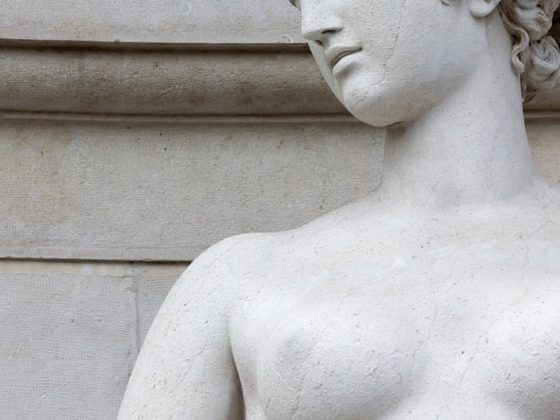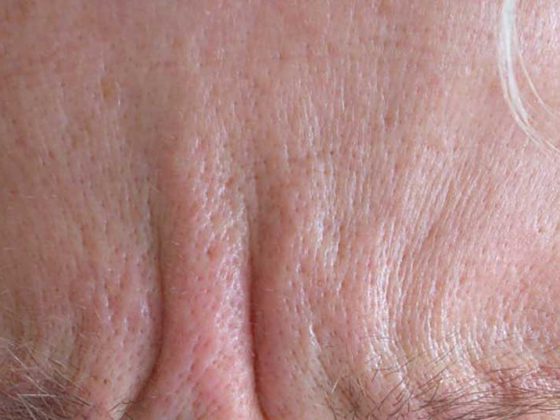In an outpatient consultation of sports medicine, disorders of the posterior heel and Achilles tendon, united in the collective term “Achillodynia”, are not uncommon. While the diagnostic procedure is not witchcraft, the therapy is unfortunately somewhat different. In short, Achillodynia, in its variety, is usually a stubborn affair for the patient and the physician.
First of all, a few words about diagnostics: With the help of a thorough anamnesis (classical and sports), a doctor will already get very far. An additional no less serious examination while walking, standing and lying down will enable the diagnosis in most cases. In any case, the feared rupture can be almost 100% excluded or confirmed. Otherwise, the technical auxiliary examinations X-ray (calcareous structures) as well as magnetic resonance imaging and Doppler ultrasound (chordal structures) provide the final certainty. So, in a short time it will be possible to distinguish the causes of pain from each other (rupture and partial rupture of the Achilles tendon are deliberately not mentioned):
- Peritendinitis/peritendinosis
- Accessory soleus muscle
- Calcaneus exostosis with bursa
- Bursitis subachillea/calcarea
- Persistent apophyseal nucleus
- Apophysitis calcanei (M. Sever)
- Impingement Os trigonum
- Tennis heel (overload of the talo-
- Calcanear joint)
- Fatigue fracture of the calcaneus
- Neuropathy/entrainment ramus calcanei
- N. suralis
- Lumbar related heel pain
- Metabolic disorders
- Medication reasons
Therapy of achillodynia
In principle, the treatment of achillodynia is primarily conservative. As in diagnostics, a whole range of possible medical and paramedical measures is available. Here is a list that is probably not even complete:
- Heel elevations, heel cushioning
- Shoe insoles
- Physiotherapy passive with ultrasound applications, connective tissue massages,
- Iontophoresis etc. or even with
- “Brush massages”
- Physical therapy, active with stretching exercises of calf muscles, strengthening; special protocols (Stanish protocol) based on eccentric work of calf muscles; foot exercises.
- Shockwave therapy
- EPI technology
- Para- and peritendinous applications of hyaluronic acid or platelet-rich plasma
- Para- and peritendinous applications of
- Steroids
- Sclerotherapy
- Local applications of topical
- Nitroglycerin patch (GTN) type vasodilators.
- Conversion of the training programs
Surgical therapy
In our experience, in the treatment of achillodynia, eccentric muscle training, developed many years ago by the Canadian sports physician Stanish and then taken up by the Swedish school, should be in the first place. One can find video recordings of this technique on the Internet. Recent meta-analyses have underlined the efficacy of the method, which can (and must!) be performed by the patient himself [1]. Provided that the exercises are well mastered, all it takes is a little discipline and patience – the program should last two to three months.
Most studies show high rates of patients who can resume athletic activities (40-80% after 12 weeks, 60-90% over the course of a year) for tendon overuse-only conditions [2]. Scientifically, this amazing benefit can most likely be explained by the effect of the muscle work form on collagen synthesis, improvement of tendon fiber orientation, and reduction of harmful intratendinous neovascularization.
Neovascularization as a crucial mechanism
Histochemical and sonographic examination of the chronically irritated Achilles tendon using color Doppler ultrasound techniques demonstrated intense new formation of vessels and nerve fibers, predominantly outside the tendon, in the deeper layers. These new structures lead to a disorganization of the fiber structure and are probably responsible for the nociceptive stimuli. The realization has led to the development of a treatment technique: Polidocanol, an alcohol solution, is injected under ultrasound guidance. These injections into the space of neoplasms (and not intratendinous) are realized one to three times in six-week intervals. There are also a number of scientific publications on this procedure with overall very encouraging results (70-80% good results two years after therapy) [3].
Other injection therapies
Regarding infiltration therapy for achillodynia, it is necessary to talk about other substances. Without any scientific studies known to us, hyaluronic acid is recently used for peritendinous injection. The rationale for such an application is likely to be found in the hypothesis of improved tissue nutrition. Injection is always more “convenient” than long-term ingestion of oral agents such as proline or chondroitin sulfate in the past. The price of hyaluronic acid is high, it is not allowed by health insurance, but used correctly it is not dangerous.
Particularly popular in sports medicine is the use of Platelet-Rich Plasma (PRP), a special autologous blood application. A platelet-rich plasma is obtained by centrifugation from the venously drawn whole blood. This plasma has a high content of various growth factors and cytokines. Thus, “Platelet Derived Growth Factors”, “Fibroblast Growth Factors” and “Transforming Growth Factors β1” can be found in it, among others. Physiologically or artificially induced platelet activation releases these factors and can thus produce a healing effect in the injected area. This technique is already used regularly, but scientifically convincing studies are still lacking.
A word about infiltration with steroids. Despite the risks known for decades, infiltration with corticosteroids is the most commonly used infiltration technique and many papers as well as the experience of most physicians show it works! However, it does not heal, and the increased risk of rupture after infiltration is also well documented. An objective analysis of the risk-benefit ratio of this method should actually lead to its abandonment.
Shock wave therapy, EPI technique and heel elevation
Shock wave therapy is also quite common. In addition to its analgesic effect by influencing pain receptors, it appears to stimulate repair processes, including inhibition of metalloproteases and interleukins. Several prospective randomized trials have compared shock wave therapy with eccentric calf muscle training or against placebo, with favorable outcomes. The combination of shock waves and eccentric muscle training seems to work particularly well, with a success rate of over 60% [4].
Probably because none of the mentioned methods has been fully accepted so far, new ones are always proposed. For the sake of completeness, we would therefore like to present a recently discovered therapy: In the ultrasound-guided EPI technique, the degenerated tendon areas are directly targeted percutaneously with high-intensity galvanic current. The acupuncture-like needle is inserted into the damaged area under ultrasound control, where the current pulse is delivered. The results achieved are very positive.
One more remark about the heel elevation with all possible forms of wedges, which is also used almost systematically. Apart from the fact that this measure hardly brings anything positive, it is fundamentally counterproductive: it promotes the usually already existing shortening of the calf muscles, a favoring factor of Achillodynia.
NSAID – not useful
So far, neither local nor systemic NSAIDs have been mentioned, although they are frequently used in practice. In most causes of achillodynia, tissue studies and microdialysis failed to find any inflammatory factors at all. The almost lack of effect and the clear side effects of NSAIDs justify their rejection.
Literature:
- Öhberg L, Lorenzon R, Alfredson H: Eccentric training in patients with chronic Achilles tendinosis: normalised tendon structure and decreased thickness at follow-up. Br J Sports Med 2004; 38: 8-11.
- Magnussen RA, Dunn WR, Thomson AB: Nonoperative treatment of midportion Achilles tendinopathy: a systematic review. Clin J Sports Med 2009; 19: 54-56.
- Lind B, Öhberg L, Alfredson H: Sclerosing polidocanol injections in mid-portion Achilles tendinosis: Remaining good clinical results and decreased tendon thickness at 2-years follow up. Knee Surgery Sport Traumatol Arthrosc 2006; 14: 1327-1332.
- Rompe JD, et al: Eccentric loading, shock wave treatment, or wait and see policy for tendinopathy of the main body of tendo Achillis: a randomised controlled trial. Am J Sports Med 2007; 35: 374-383.
HAUSARZT PRAXIS 2016; 11(4): 6-7











